Why The Can-Am Spyder RT Limited Is A Killer Touring Trike
The luxuriously-appointed three-wheeler delivers long-haul comfort and 115-horsepower thrills.
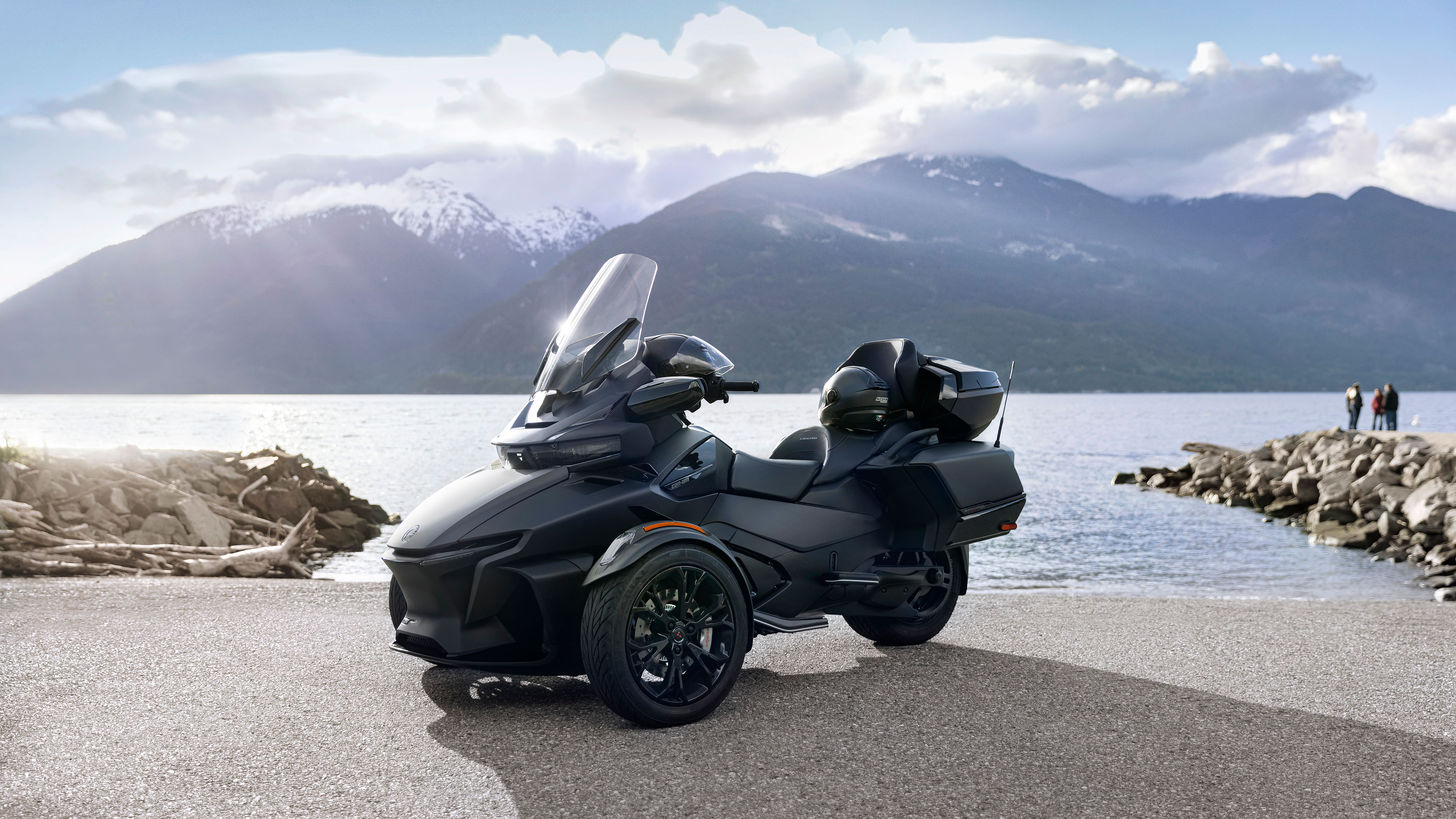
In the minds of many riders, three-wheeled motorcycles connote a compromise. You can still revel in the exhilaration that comes with cracking the throttle and feeling handlebars pull you to 60 mph with sports car-like acceleration, but the extra stability provided by three wheels comes at the expense of maneuverability, speed, and perceived “coolness.”
After traveling over 500 miles in the plush saddle of the three-wheeled Can-Am Spyder RT Limited, “compromise” is not a word I would ever associate with the Canadian off-road vehicle specialist’s premium on-road offering—even when compared to traditional motorcycles.
Trikes Only: The Can-Am On-Road Lineup
Can-Am is known best for its off-road division, which features over a dozen side-by-sides and ATVs. But the on-road division offers just two core three-wheeled models, both of which feature upside-down “Y” configurations with two wheels in the front and one in the rear, as opposed to the more traditional Y configuration employed by Harley-Davidson trikes.
It’s crucial to note that while these are classified as motorcycles legally, none of Can-Am’s on-road vehicles have a typical motorcycle’s manual transmission or independently-operated front and rear brakes. Instead, they employ either a Continuously Variable Transmission (CVT) or a six-speed semi-automatic transmission, and braking is done entirely with a single pedal that slows all three wheels simultaneously.
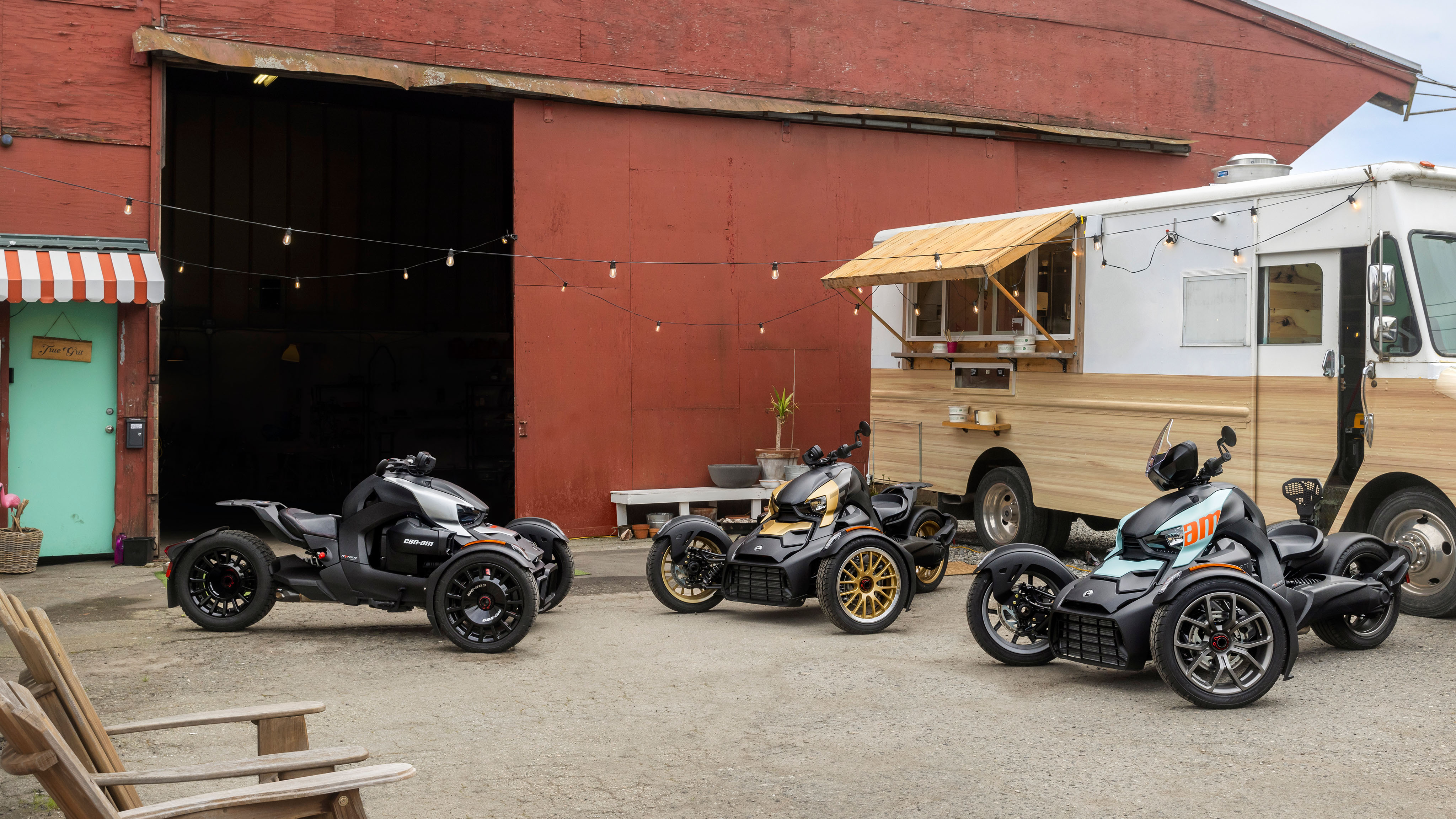
These simpler systems, along with the extra stability afforded by three wheels, make any one of Can-Am’s on-road vehicles an excellent choice for someone who’s interested in motorcycling but wants an objectively safer starting point.
The entry-level model is the Can-Am Ryker, which features a stripped-down, bobber-like aesthetic across three trims. The base Ryker model is available with either a 50-horsepower, 600cc Advanced Combustion Efficiency (ACE) two-cylinder or an 82-hp, 900cc ACE three-cylinder, both of which come mated to a CVT.
The base Ryker’s $9,599 starting price is competitive with comparable two-wheeled motorcycles, especially when you consider the list of standard features, including anti-lock brakes, traction control, stability control, a fuel gauge with a distance-to-empty reading, and, uniquely, a 1.85-gallon frunk.
The $12,499 Ryker Sport gets the 900cc three-cylinder and adds cruise control and Sport Mode for “drift-ready handling,” while the $14,599 Ryker Rally, also powered by the 900cc three-cylinder, upgrades the front shocks and adds an air intake, Akrapovic exhaust, a nicer seat, and an off-road ready skid plate.
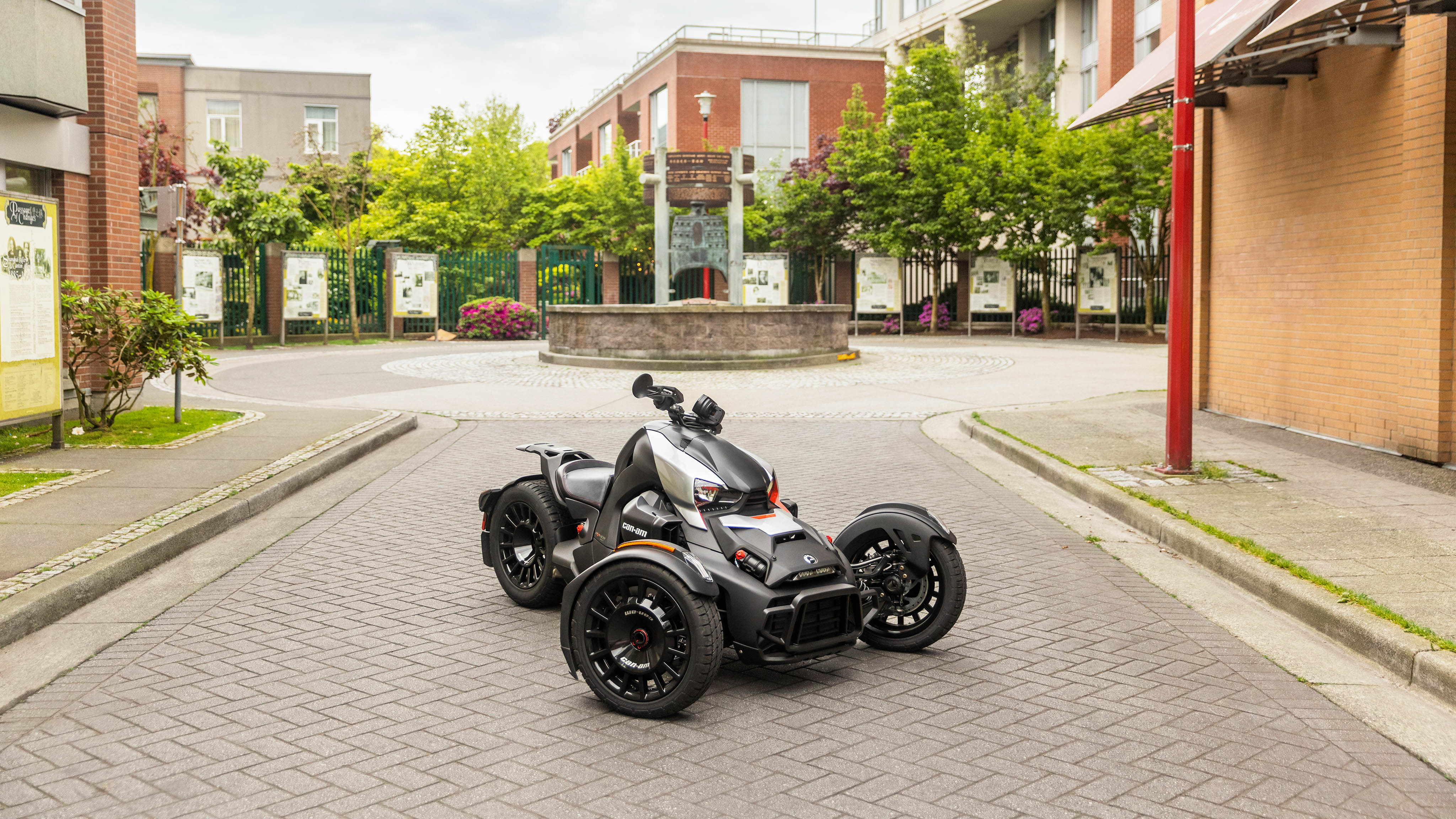
Compared to the Ryker, the Spyder is bigger and better-appointed across the board. A 1,330cc ACE inline three-cylinder sends a potent 115-horsepower and 96 pound-feet of torque to the rear wheel via a semi-automatic six-speed transmission with a reverse gear. Additionally, the Spyders all get 10.25-inch touchscreens with BRP Connect and Apple CarPlay—more on those below.
The Spyder breaks down to two sub-models: the cruising-oriented Spyder F3 and the most luxurious, touring-oriented Spyder RT. There are four Spyder F3 variants that get varying degrees of equipment upgrades—feel free to explore and compare in Can-Am’s excellent vehicle configurator.
I will focus on the Spyder RT range, comprised of the $26,599 Spyder RT, the $30,499 Spyder RT Limited and the $32,999 Spyder RT “Sea-to-Sky.” Aside from storage options and creature comforts, there’s not much notable equipment variation between the Spyder RT trims. I tested the RT Limited, which features rider and driver floorboards, heated grips, heated seats, a glove box with a USB-out port, and a whopping 47 gallons of maximum cargo space.
First Impressions
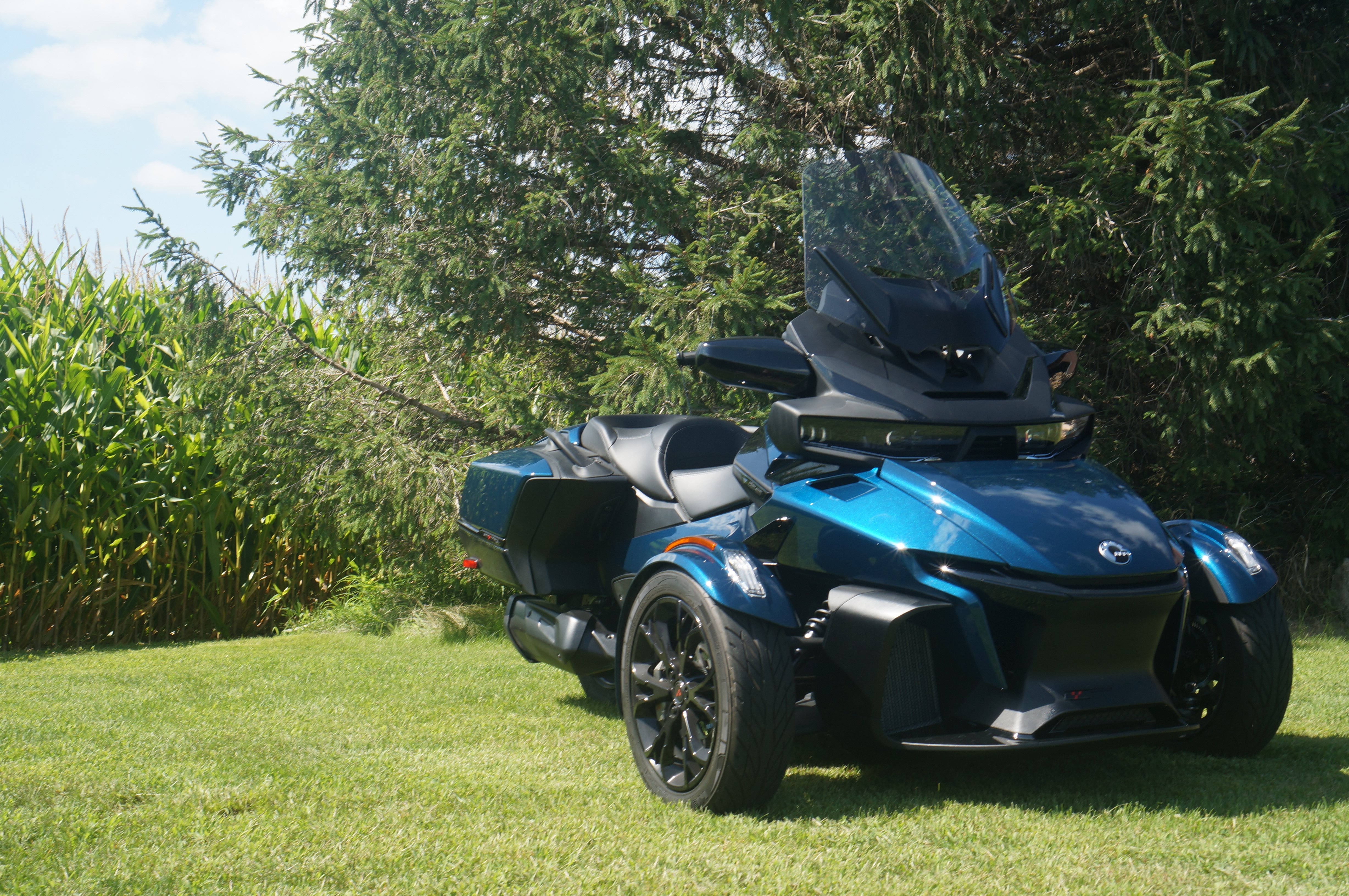
You generally don’t need a tutorial to demo a motorcycle, but one is definitely required for the Can-Am Spyder. Turn the ignition to “On” (at which point the windscreen automatically deploys from its resting position like a supercar’s active wing). Hit “mode” to clear a safety warning. Press down on the brake pedal. Deactivate the kill switch. Press the ignition button to start the engine. Press another button to release the parking brake. Finally, push forward on the shifting paddle to get into gear.
The process seems tedious at first, but once it’s down, it becomes a satisfying routine—especially the shift into gear, which is marked by a beefy “clank.”
After going over this process no fewer than three times with a rep at my local Can-Am dealership, I did something that I never have done on a motorcycle before: reversed out of a garage. Reversing the Spyder is nothing like waddling backward on a bike and more like backing up a car, but easier because of the Spyder’s smaller size.
On the road is where similarities with automobiles end, contrary to claims you might read about trikes feeling more like cars than motorcycles. I’ve yet to ride in a car that’s controlled via handlebars and a throttle on the grip, in which wearing a helmet is advised and my entire body is exposed to the elements.
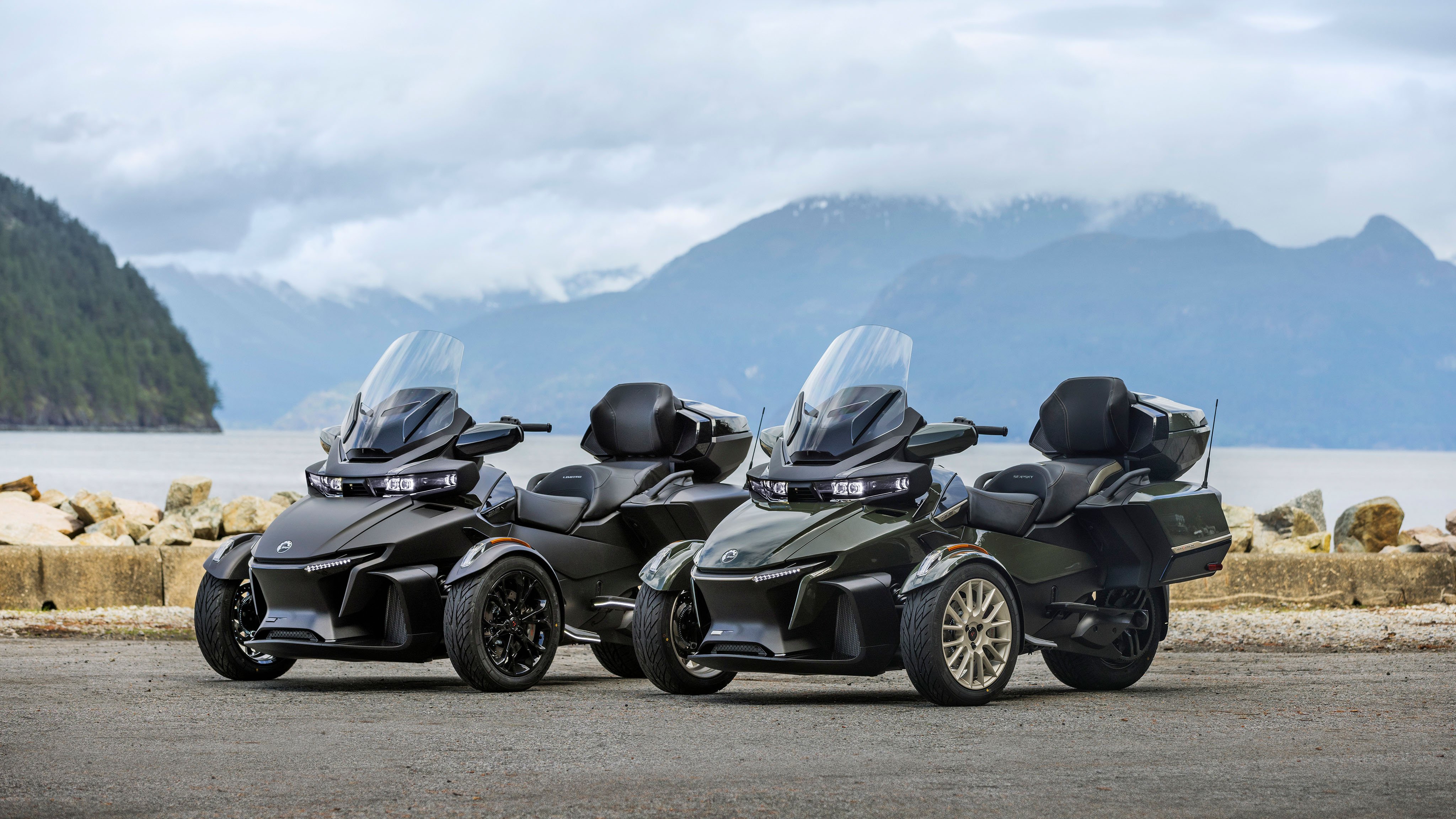
Even when comparing the trike experience to the bike experience, there are some notable differences. To upshift on the Spyder, you simply press the shift paddle forward with your thumb—no clutching or left-foot movement is required. The transmission will automatically downshift with no inputs, although I found myself downshifting manually almost exclusively by pressing in on the shift paddle with my index finger.
Because of the foolproof transmission, it’s easy to achieve smooth power delivery throughout the rev range on your very first ride. Acceleration is brisk, especially when the 1,021-pound dry weight is considered, although I suspect that this is the tamest that 115 horsepower feels—or sounds—in something classified as a motorcycle.
With regard to thrills, the Spyder shines in the corners. Getting an adrenaline fix on a bike while cornering on a public road is a dicey proposition, because when you accidentally exceed a motorcycle’s limits and break traction in a corner, you crash.
You want to lean harder, so you corner faster, but you’d better nail the entry speed, because if you brake or accelerate too hard while cornering, you’ll crash. If you hit oil, sand, water or an unexpected bump, you’ll crash. And if you try to lean your low-riding bobber like a sport bike, you’ll crash.
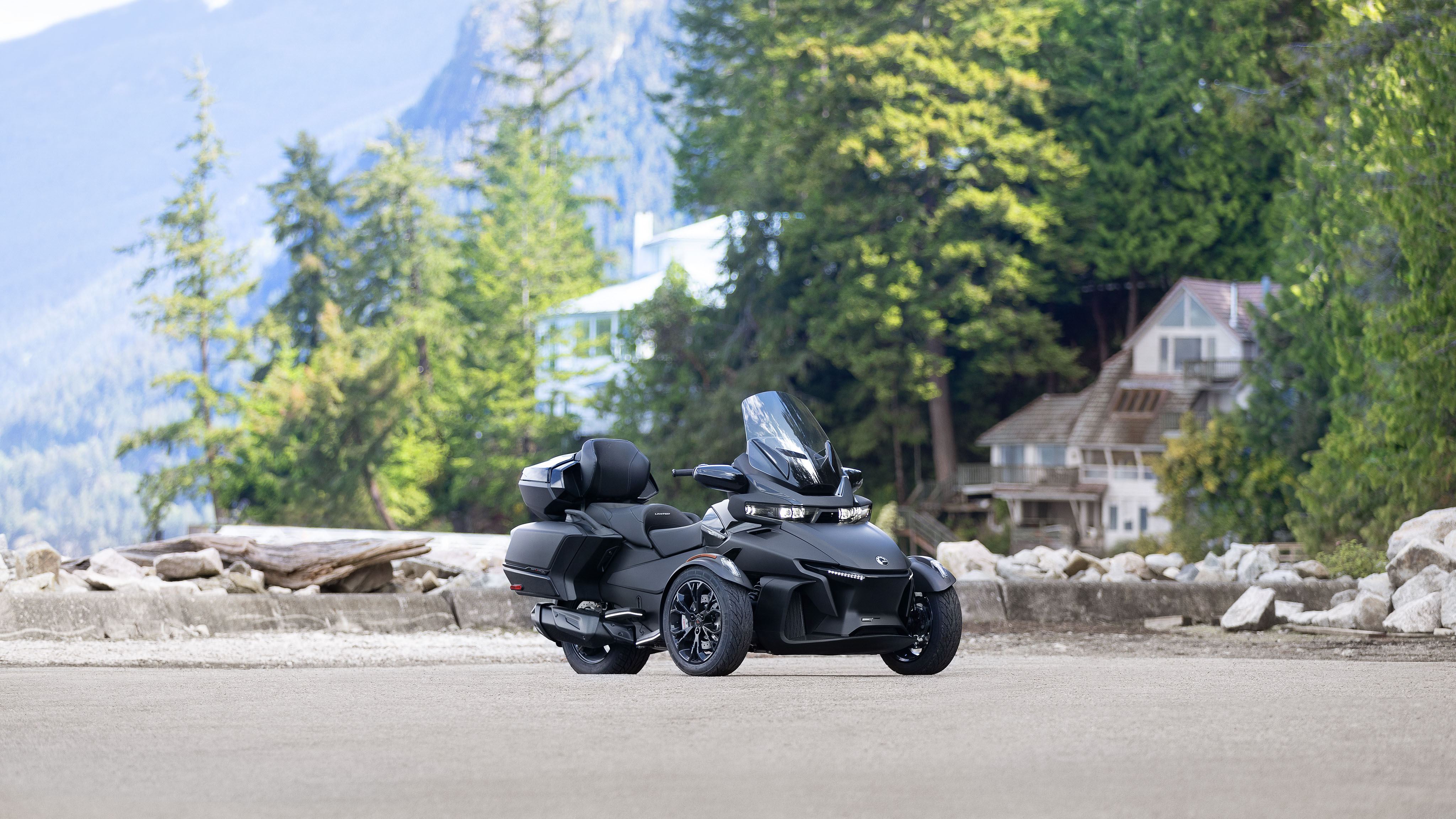
The Spyder’s risk-to-thrill ratio is way lower when cornering. There’s an intensely thrilling sensation that something is trying to pull your body in the opposite direction you’re turning. The remedy is simple: Hold on tight.
Once you’ve got that figured out, you can corner like a madman with near impunity (insert legal disclaimer that the author’s views do not reflect those of the Can-Am corporation). Go ahead and speed through turns at will (on low-traffic roads, please). You’ll eventually find the limits and break traction. But instead of crashing like you would on a bike, you’ll just feel a bit of understeer or oversteer that’s easily correctable. You may even learn to drift.
Nothing bad happens when you exceed the limits of a Spyder, so you can do it over and over again. It’s like having a cheat code for high-speed motorcycle cornering.
The Long Haul
Fun as my cornering revelation was, the Spyder RT Limited is made for touring, so I tested its long-haul pedigree on a trip to Minneapolis from my home base in central Iowa—a pretty, but admittedly boring, straight shot up I-35 that takes three hours. This would be my longest trip yet on a motorcycle.
The first thing I noted was the impressive storage capacity. I squeezed a small duffle bag in one hard side case, extra riding gear in the second side case, and an extra-large backpack stuffed to the brim in the frunk, where I still had room to store my helmet.
I was also curious about the infotainment system. Cycling through the 10.25-inch touchscreen display, you’ll find BRP Connect, which, like Apple CarPlay, allows you to run smartphone apps. The problem is only a handful of apps are supported, and I’d never used any of them. I tried out a navigation app, Sygic GPS Navigation, but found it unfamiliar and difficult to use with the joystick on the handlebars while riding.
I ultimately just used my smartphone in my personal handlebar mount for navigation. It’s worth noting that discussion of BRP Connect’s shortcomings is largely a moot point for Apple iPhone owners, as all 2024 Can-Am Spyder models have Apple CarPlay integrated. Android Auto will likely follow.
I did connect my phone via Bluetooth to test the on-board audio. In-town with a helmet, the six-speaker system was more than ample. At 80 mph on the interstate with the volume turned all the way up, I still didn’t have to strain to hear music or even voices on podcasts.
The hallmark of a great touring motorcycle, though, is comfort. And I can’t imagine a motorcycle being more comfortable. It’s like riding in a La-Z-Boy, if La-Z-Boys had upright positions and no backrest. The SACHS shocks, which adjust automatically based on weight, absolutely devoured large bumps that would clobber me on my own motorcycle. Three hours was a breeze. Whatever distance you’re comfortable traveling in a car, you can do it on the Spyder RT Limited.
An aside: While I didn’t have a passenger on the ride to Minneapolis, I had given my buddy a couple rides around town. He immediately remarked, “This is so much nicer than riding on the back of your bike.”
Is The Can-Am Spyder Cool?
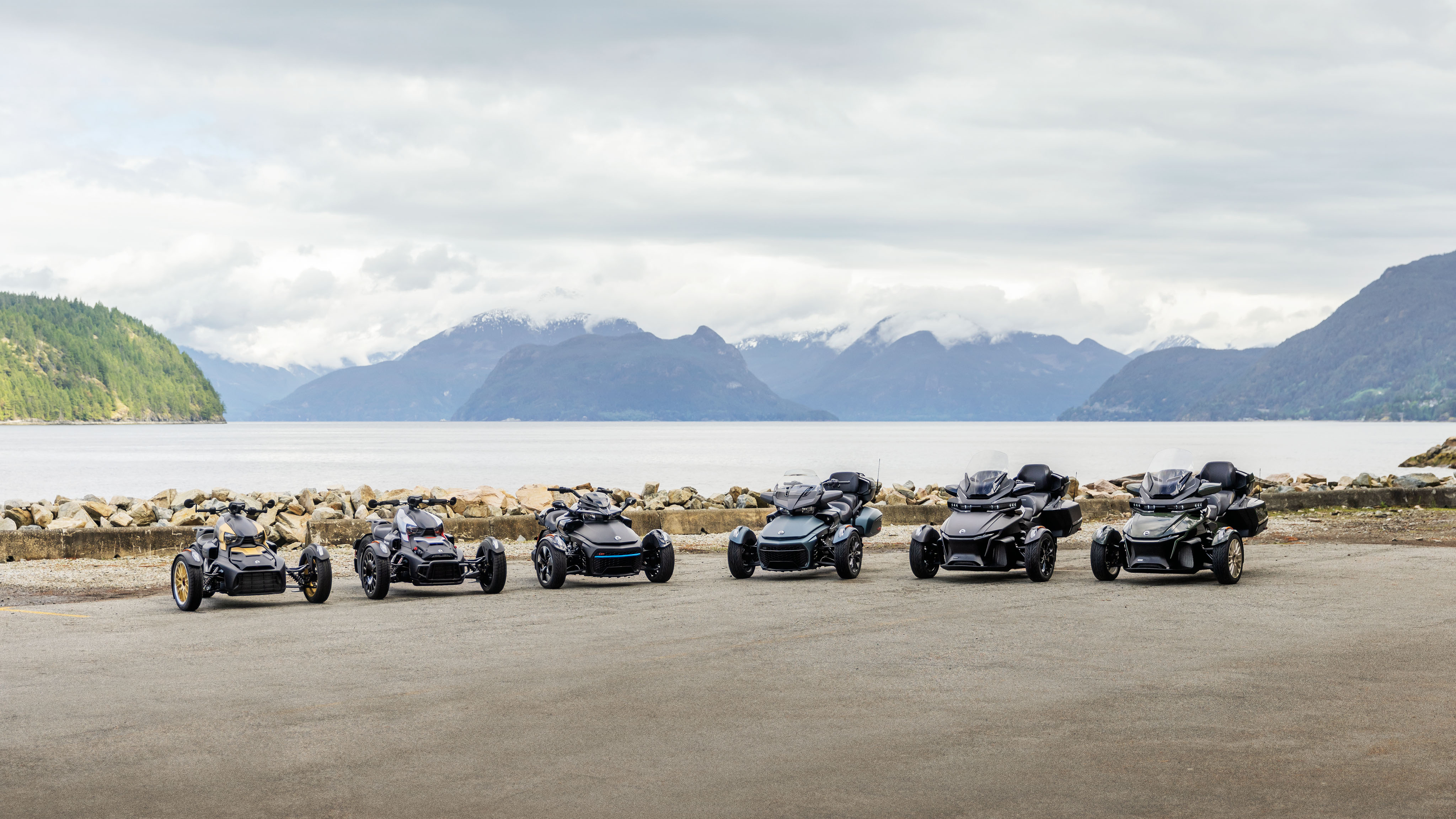
As I was gearing up for my ride back home outside of a Vietnamese restaurant in midtown Minneapolis, I heard someone yell, “What do you think of it?” He told me he’d been a lifelong rider before he sustained a foot injury that prevented him from operating the gear shifter on his Harley. He had to sell the hog and he was curious about the Spyder.
I asked if he wanted to take it for a spin around the block (His 13-year-old son was left behind as collateral.) When he returned a few minutes later, he shut off the engine and uttered a single word: “Sold.” He obviously represents a large part of the Can-Am Spyder’s target market. I wasn’t surprised at all when he, a middle-aged man, inquired about the Spyder.
However, I was very surprised when, on the trip home, a black Mustang GT donning a “DROPOUT” license plate and driven by a 2009-era Justin Bieber doppelganger pulled up alongside me, flipped me the “rock-on” devil horns, and continued speeding down I-35. Despite the message of a certain meme that circulates in the toxically stupid realms of motorcycle Reddit, that young person clearly thought the Spyder was cool. I’m inclined to agree with him.
Closing Thoughts
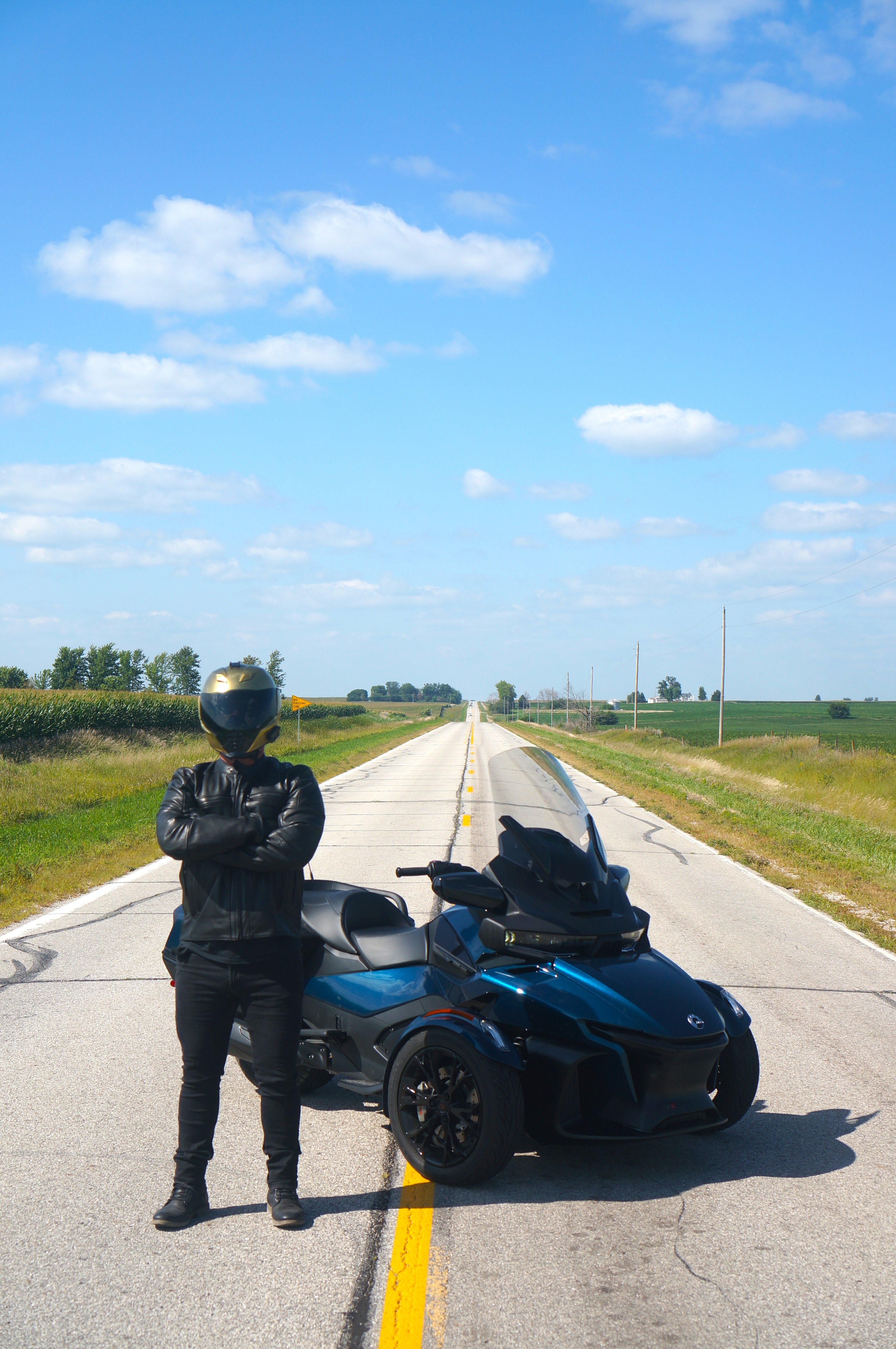
About a month after I took the Spyder to Minneapolis on what was my longest motorcycle road trip, I rode my personal bike, an Indian Scout Bobber Sixty, an even longer distance to St. Louis. I wished I was on the much more comfortable Can-Am. You may never hear another motorcyclist say such a thing… unless they too have put in long-haul miles on the Spyder RT Limited.
